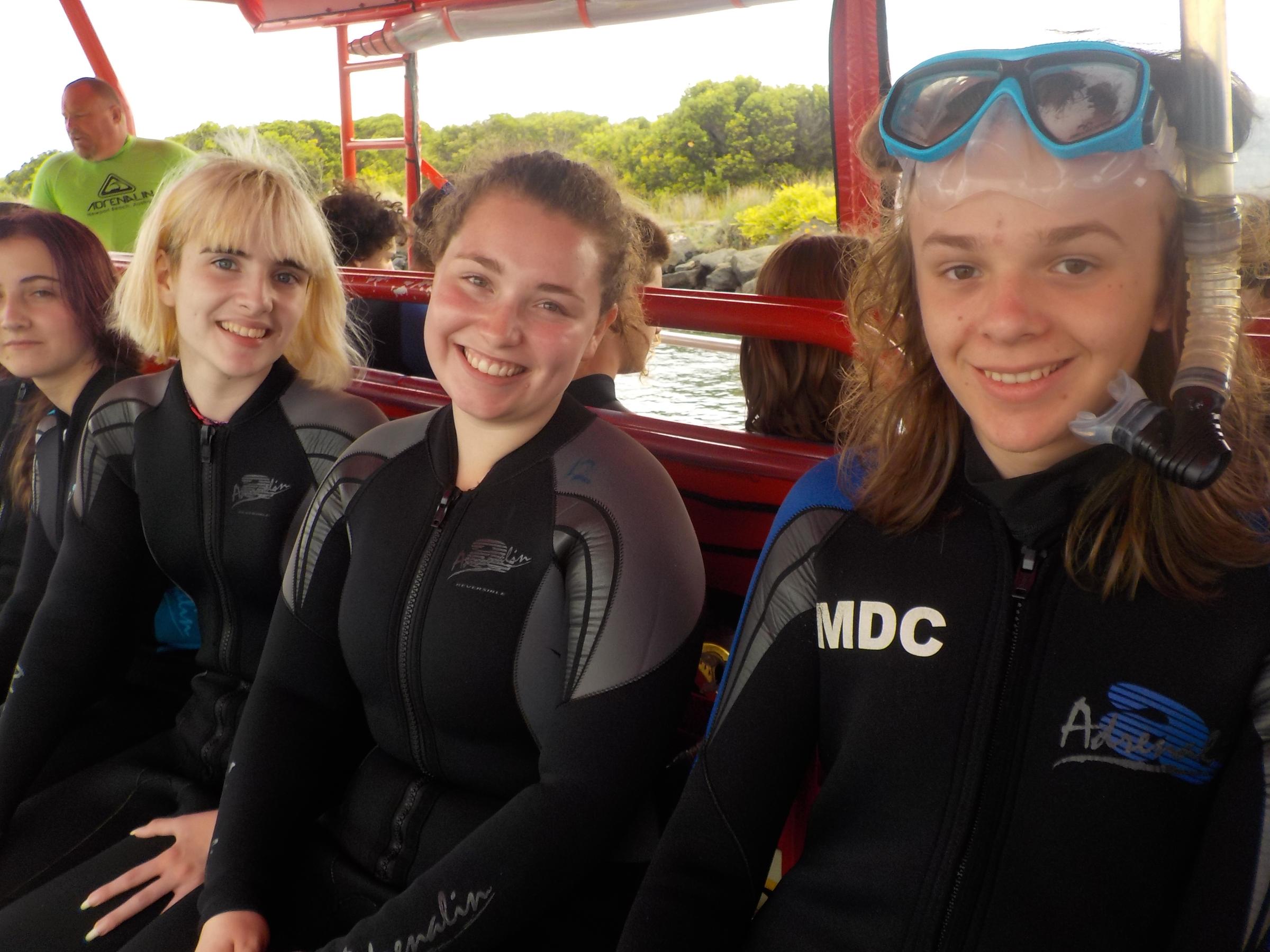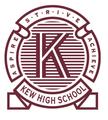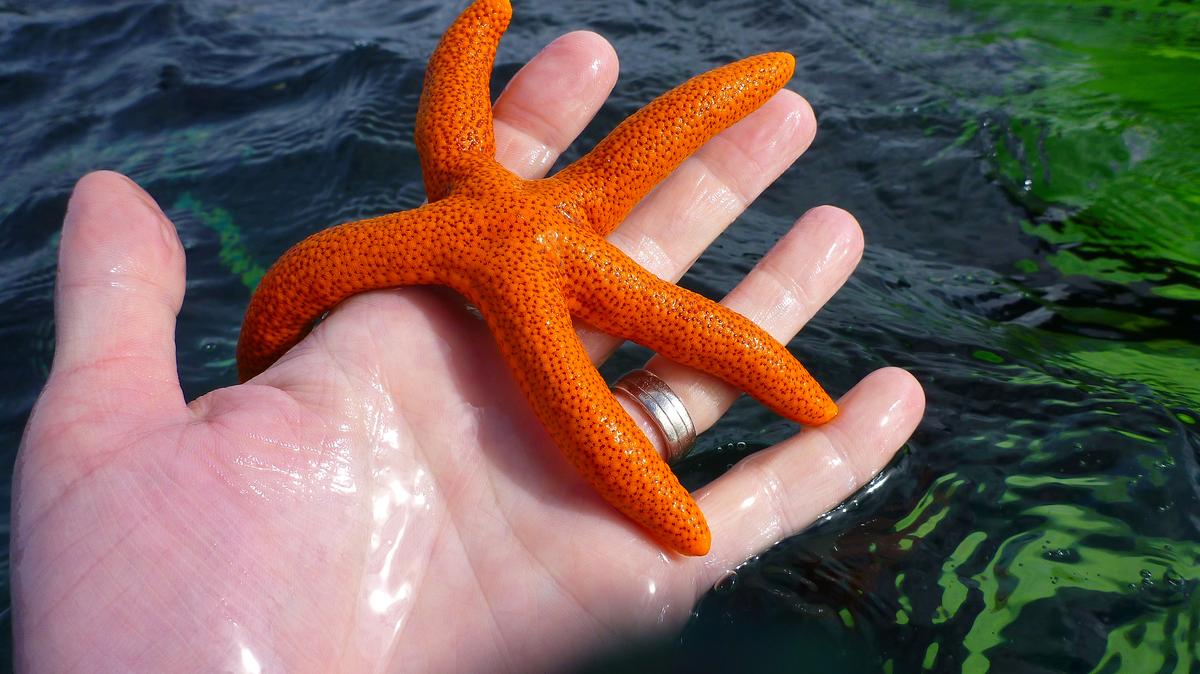BIOLOGY CAMP

On Thursday 28 March, 65 Unit 1 Biology students and eight staff went to Queenscliff for an overnight camp focussed on a range of activities coordinated by the Marine and Freshwater Discovery Centre. This education facility is an initiative of Fisheries Victoria and provides a range of tailored programs beyond the scope of the regular classroom. Specifically, the camp enabled students to meaningfully fulfil the field-work component of their course, and in so doing, add valuable data to the centre’s longitudinal study of population changes in the marine ecosystem of Swan Bay.
On arrival at the centre, students rotated through three laboratory activities focussed on deepening their understanding of the range of plant and animal adaptations seen in a marine environment. Students completed a fish dissection, microscope based analysis of structural adaptations and then had an opportunity to handle a number of organisms in the touch tank.
For the field-work component of the camp students at the beach used specialised equipment and the expertise of the instructors, and carried out a variety of sampling techniques aimed at collecting data on plant and animal distribution. Students could then appreciate first-hand, how the complex adaptations seen in the morning’s activities enable survival in this harsh marine environment.
Next morning students had the choice of a snorkelling trip or a marine studies cruise. The snorkelling group went out to Pope's Eye, a unique and protected area in the Marine National Park that offers a rich community of plant and animal life. The marine studies cruise travelled out to observe a colony of Australian Fur Seals and acolony of Australasian Gannets. Along the way a small sledge was deployed which sampled material from the bottom of the bay enabling students to observe a range of bottom dwellings organisms like crabs, sea-stars, seahorses, sponges, some fish as well as lots of seaweeds.
On return to school, students analysed their data and in conjunction with further research presented their findings as a poster. They selected one organism viewed over the two days, identified a range of its adaptations and linked these adaptations to the organism’s survival in its habitat.
The Unit 1 Biology teachers (Jory Clark, Mark Rickard and Di Keage) along with the students would like to thank all the staff who came along to ensure the success of the camp by driving the buses, general supervision, organising the allocation of rooms, and getting breakfast on the table: Penelope Cleghorn, Susan de Leon, Tom Williams, Judy Finger and Dawn Morrissey. There are two special thank-yous: Mark Brentnall, although now retired from Kew for two years, came back to drive one of the buses and Mark Rickard who’d only just been appointed to Kew and his first day at Kew High School was the camp. Great effort.
Di Keage
Unit 1 Biology teacher
Reflections from two of our International students:
It was a sunny day and we were heading towards Queenscliff. Around 11:30 we arrived at our first destination – the Marine and Freshwater Discovery Centre. In the display centre, we saw a lot of incredible marine animals such as chubby globefishes which can inflate themselves when threatened and some fluffy seaweed. After that, led by a fishery expert, we dissected some marine fish. They were stinky, but it was a lot of fun. The fish we dissected were not wasted, instead they went to the dinner table and were effectively recycled.
In the late afternoon, we arrived at a beach and investigated a lot of small creatures that we had never noticed before. We learned about where they live, what they eat and how they produce offspring. We also classified those creatures into different species.
The next day was a wonderful boat cruise on Port Philip Bay. Okay, it was wonderful to me, not to the fellows who got a bit seasick! We headed back to school at 12 o'clock. The camp was short but interesting. Anyway, we had a great time learning and playing at the same time.
Chengkun Zhou
Year 11
We observed so many organisms in the laboratory and also touched some of them. We studied the internal structure of a fish, which was very interesting. After that we went to a beach and found some species by ourselves and recorded their adaptations. Although it was cold that day, we still very much enjoyed that place. On the second day, we took the boat and saw seals in the sea. They were all very cute. We found some sea snails and sea horses in the algae as well.
Overall, it was a fantastic camp, I also made some new friends with other students.
Iris Zhang
Year 11








